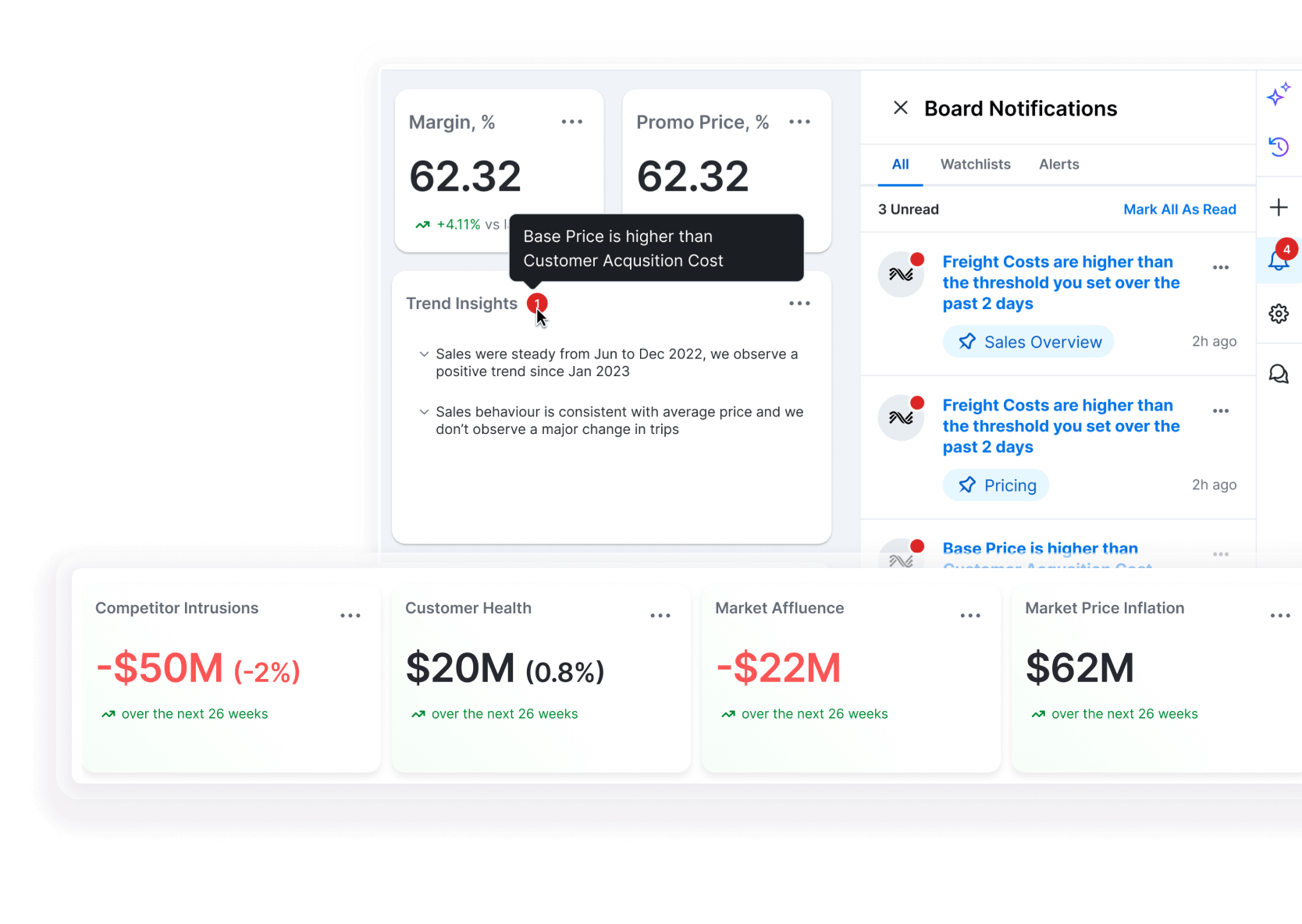Predictive AI
Anticipate trends, make informed decisions, optimize operations
Realize rapid time to value with fine-tuned predictive models and what-if scenario analysis—optimized for your industry’s unique challenges.


A fundamentally different approach
No more building from scratch or expensive service deployments. Save resources with packaged AI applications that address industry-specific challenges. SymphonyAI applications use the right data sources, predictive models, LLMs, connectors, and orchestrators for each use case.
Drive results with the power of predictive AI
Make informed decisions at scale
Drive value with access to the information you need, when you need it, to make informed decisions in real-time.
Manage petabyte-scale data
Better understand the who, what, and why behind industry-specific trends to generate summaries, reports, and charts that are customized and impactful.
Boost efficacy with tuned ML algorithms
Effective and efficient algorithms designed for specific vertical applications can make decisions at scale.
Unite generative and predictive AI for outsized benefits
Using historical data and ML, predictive AI forecasts future events, trends, and outcomes. Generative AI enhances this with what-if scenario analysis to explore various actions and probable results. Combining both technologies allows businesses to not only foresee future trends but also actively shape their success.

Foundational Eureka AI platform
Trusted performance, enterprise-grade security, and full explainability are core to the Eureka AI platform. Eureka is tailored to each industry, with vertical-specific data sources, connectors, knowledge graphs, predictive models, copilots, orchestrators, and agents.
Discover the value of SymphonyAI
Predictive AI FAQs
The team at SymphonyAI is here to answer your questions about AI for business and our solutions. Here are some of the most common.
How do predictive and generative AI work together?
Predictive AI uses machine learning algorithms and historical data to forecast future events, trends, and outcomes. It helps businesses make proactive decisions by analyzing data patterns and predicting potential future scenarios.
SymphonyAI’s predictive AI models are packaged specifically for various industries, eliminating the need to build models from scratch. It integrates data sources, predictive models, connectors, and other tools to address unique industry challenges without extensive custom development.
Predictive AI provides real-time access to data and insights, allowing businesses to make informed decisions at scale. It delivers insights tailored to industry-specific trends, supporting efficient decision-making and operational optimization.
SymphonyAI combines predictive AI with generative AI to enable both forecasting and what-if scenario analysis. Predictive AI forecasts future events, while generative AI explores potential outcomes, helping businesses shape their strategies based on likely outcomes and emerging trends.
SymphonyAI optimizes predictive AI models for a range of industries, including retail, CPG, financial services, industrial, media, and enterprise IT. Every application is tailored to meet the unique data and operational needs of these sectors.
The Eureka AI platform provides enterprise-grade security and full transparency in AI operations. SymphonyAI emphasizes compliance, data integrity, and security protocols to ensure reliable and secure AI applications.

